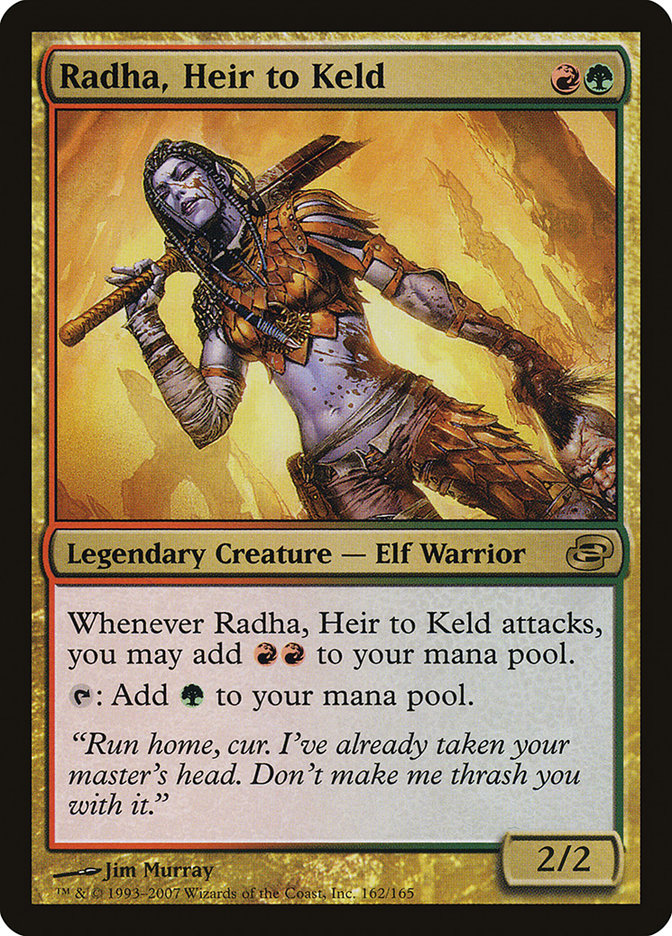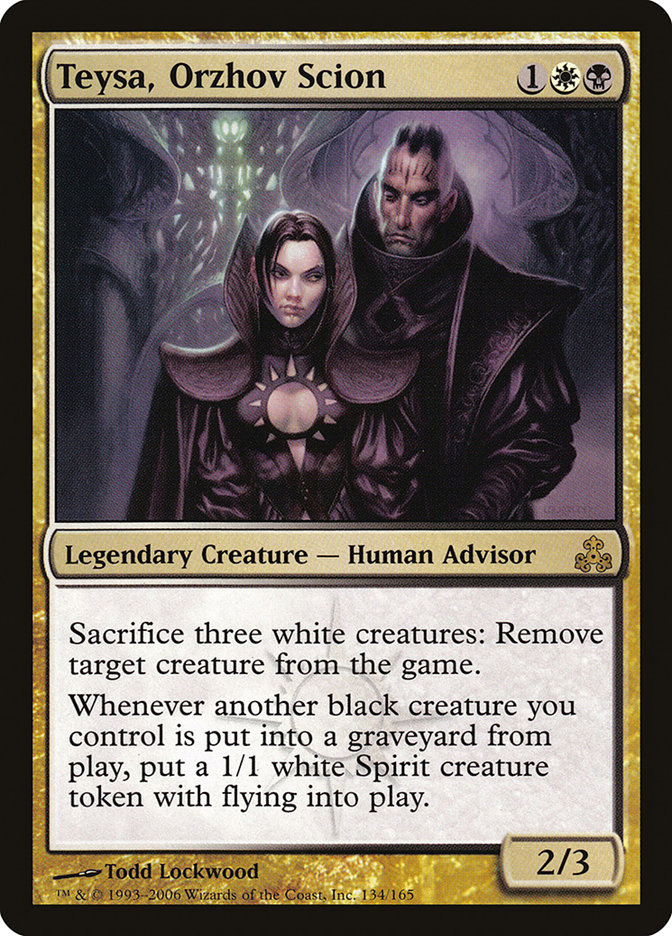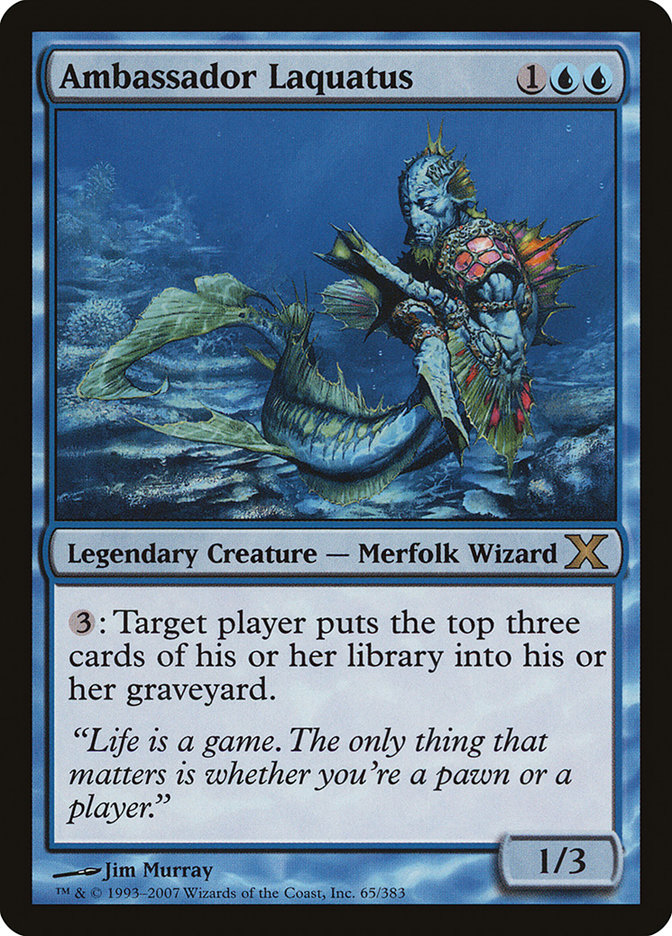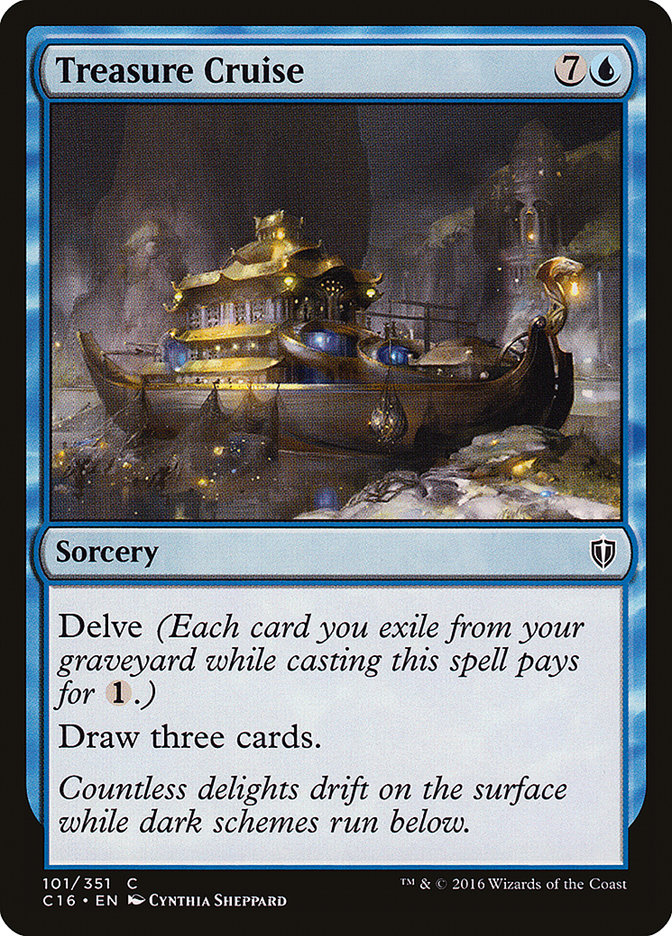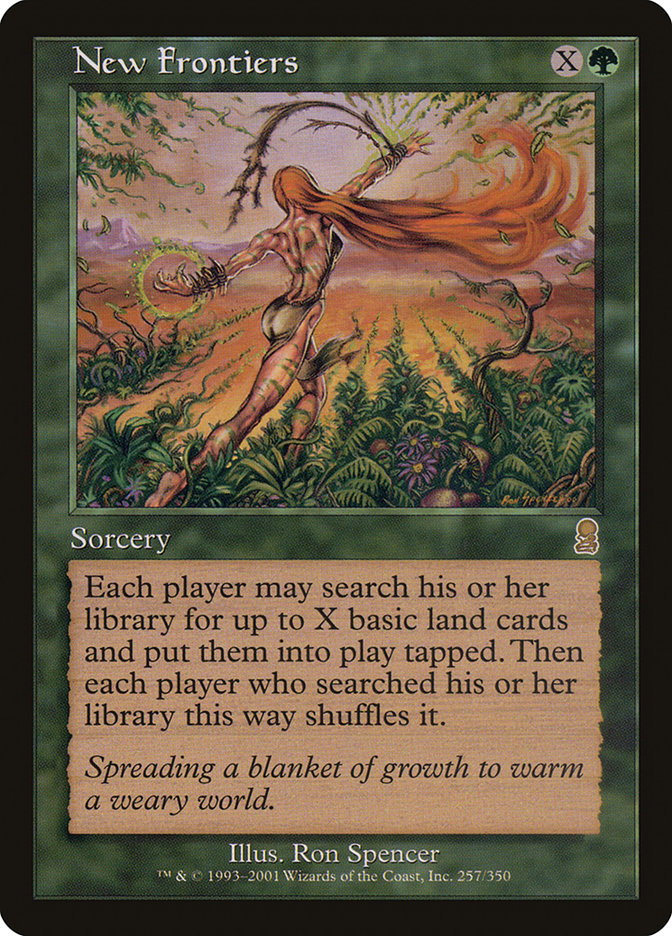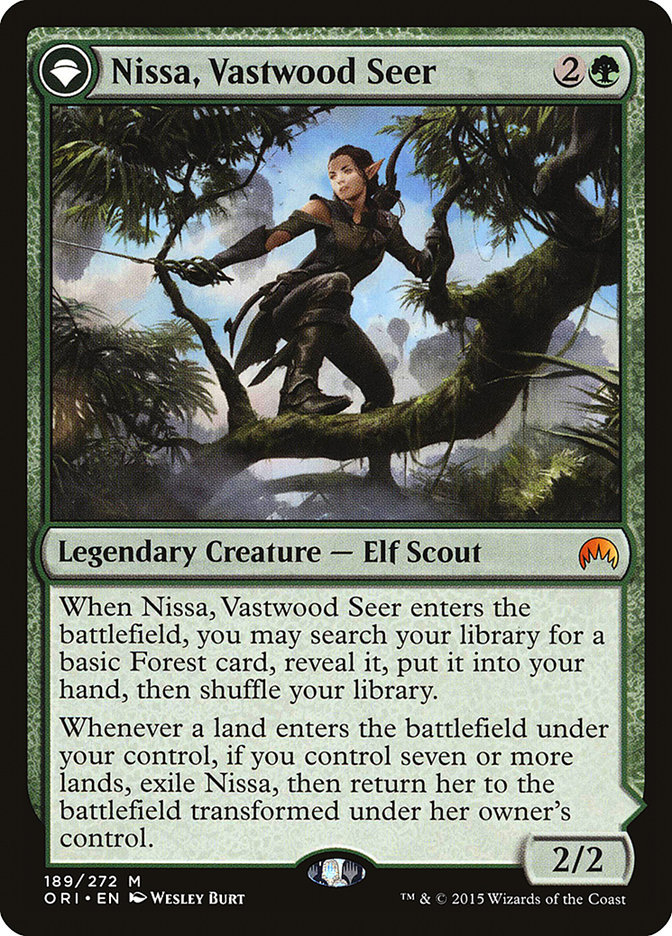We’ve seen this movie before, and a lot of you out there think you know how it’s going to end. A new format makes its way to the forefront of everyone’s collective consciousness, and people are quick to gravitate towards it. After all, it’s different and exciting, and that translates to dollars spent, hours played, and a hope that you’re in on the ground floor of something potentially extraordinary.
Oh hell. Did I just explain how we all reacted to Tiny Leaders two years ago?
Let’s venture down the rabbit hole.
A few years ago a craze swept card stores everywhere, and that was exactly what Tiny Leaders was. It was Beanie Babies. It was Pogs. It was nu metal. In short, it was a fad, and because it was shiny, Tiny Leaders made a simple concept (Commander) into something vastly cooler.
For those of you who may not be familiar, Tiny Leaders was Commander where everything cost three and under. Decks were smaller, power creeps weren’t as grossly overwhelming as they are in traditional games of Commander, and the barrier for entry was surprisingly small compared to how expensive a competitive hundred-card deck could be. I even went out and bought an entire Mono-Blue Ambassador Laquatus Tiny Leader…thing…complete with foil general. All my Islands matched! I was all in on how neat I thought this format was.
But then it wasn’t.
Like a Madden video game, after a while it stopped being relevant. Fewer and fewer people were bringing their decks and more and more were selling off the pieces, and it wasn’t long until I was the only one towing around my Ambassador Laquatus mill deck. Into the binder or sell pile it went, and that was that. Cute fad over. Moving on.
The comparisons between Frontier and Tiny Leaders are warranted. They’re both innovative, interesting, and compelling. They’ll let you play with cards that you may love and enjoy, but aren’t typically played it the more widely battled formats. But where Tiny Leaders had a very visible ceiling (Ezuri, Renegade Leader), Frontier is widely unexplored. The more intriguing part about Frontier is that, for the most part, the format is applauded! Collected Company, Siege Rhino, and several other cards are hated universally, but that doesn’t stop neat things like targeting a Dig Through Time with a Torrential Gearhulk from happening. There’s no banned list, and WoTC isn’t curating every inch of it with bannings or unbannings that the community may or may not agree with.
Sure. I’m interested. That doesn’t stop me from being cautious, but for now at least, you have my interest.
Fears
There is no denying that Frontier, at least upfront, is alluring. It’s the wild, wild west, like that Will Smith song, except with less Dru Hill. Sometimes I make these analogies to see if my editor will link you the videos. [Unbelievable.—Ed.]
Frontier allows all sets of Magic from Magic 2015 onward, meaning M15, Origins, Khans, Battle for Zendikar, Kaladesh, and Shadows blocks are legal. The format provides a contemporary feel for players who aren’t too keen on getting rid of the cards they bought or traded for within the last couple of years, and building a very competitive Frontier deck is about as easy as keeping your cards from Khans. Buying in won’t set you back more weighty dollars like a marquee Modern or Legacy deck would, and that is extremely appealing to casual and hardcore players alike. However, that doesn’t make it without its faults, or, at the very least, what you need to be afraid of when it comes to getting too excited.
Money Talks
The biggest fear that I have heard mentioned when discussing the early relevance of Frontier is simple: buying cards for a non-sanctioned format that may not be around for long. Tiny Leaders taught us that hype can be huge, but the follow through is more like a candle in the wind. This equates to dropping a few hundred dollars, possibly more, for pretty much nothing in the long run. That’s not to say most staples aren’t a sound investment; fetchlands along with other pillars of Frontier are cards that maintain a good bit of value and hold multiple cross-format applications, so you could be in worse spots.
Another fear that players express is whether or not Frontier is simply a fad that won’t be around after they’ve already placed their time and hard-earned money into it. I’d personally be afraid to drop three or four hundred dollars on a deck, only to find several weeks later no one else around me cares. We just got over casting Collected Companies in Standard, so the apprehension about jumping into Frontier when a lot of players are still shellshocked from Siege Rhino and Rally the Ancestors might not be the smartest move. I’m sure, if you’re reading this, you’ve seen the threads or tweets about players not being terribly moved to take on Frontier simply because the cards just rotated and they’re glad to see them gone for a bit.
The other side of quelling that fear, however, is that Frontier has no banned list. While the card pool is finite, the decks and strategies you can employ aren’t. Dig Through Time and Treasure Cruise have homes in Frontier, and they are able to combat a multitude of prevalent strategies in Frontier. The argument also exists that Dig and Cruise may not even be that oppressive in the current iteration of Modern, given how it has evolved into a turn 3 or 4 format with incredibly streamlined, linear, and efficient decks.
Too good yesterday, not good enough today.
Time and money are certainly a good reason to be afraid to get into Frontier. If those are your reasons, I can’t blame you. However, we’ll still press on.
Phobias
It may be difficult for some people to admit, but Tiny Leaders created almost a phobia when it comes to embracing new formats. At this point, TL feels a bit like a punchline to a joke that a lot of folks don’t laugh at. It still has pockets of popularity in many areas, but as a whole the hype has died down considerably. If a format isn’t embraced or backed by Wizards of the Coast, just how much longevity can it have? Being snakebitten isn’t exactly where you want to be when it comes to hopping into Frontier.
You may say that Commander, once a casual and non-backed format, flourished without Wizards for years before Commander decks began production or cards printed in new sets could be viewed as directly made for Commander. This is an exception to the rule, but it doesn’t disprove it. When old Extended was canceled and replaced by Modern, the format died almost immediately. If Wizards isn’t behind it, for the most part their support can make or break whatever they are supporting.
This “Tiny Leaders effect” ripples through other formats as well. Pauper, a popular MTGO feature, is something you’d be hard-pressed to find in live tournaments or at your local game shop. This isn’t a bug but a feature, indicative of the nature behind what WoTC will offer assistance to and what they know makes them money.
Oy.
Phobias about these new and trendy formats develop over a number of things, from local reaction to them all the way up to how much coverage the actual format itself is getting. Chas Andres did a very cool write-up last monthabout Frontier, along with a few other notable authors about its viability. This isn’t too dissimilar from what happened with Tiny Leaders, but the financial side of Frontier seems far less volatile than TL due to many cards seeing play in just about every format out there. Cross-application is key to quelling those phobias you may have, because regardless of how Frontier does, your cards won’t implode in value like many Tiny Leader ones did. Safe money is a security blanket, and although your Digs won’t be cast in Modern any time soon, they can be bought on SCG for $1.50, and Collected Company is under $10 apiece.
There are scarier things.
Like the unknown.
Future
Here’s where it gets tricky.
Is there a future for Frontier?
The safe money is “yes,” because it is, by proxy, an extension of Modern. If you are a Modern player, chances are you already have most of the staples and can play Frontier without batting an eyelash. If you aren’t, but you’re interested, most of the cards aren’t something you’ll take a bath on. They trade well, and in a pinch you could easily move them for other cards that you’d need for Standard or Modern.
My main concern with Frontier is the echoed sentiment throughout this piece, and that’s how long it can be sustained.
By association, Frontier was created as an alternative to Modern, which places it in direct competition with it rather than it being a companion format. As I mentioned earlier, Modern usurped Extended, and from there Extended went extinct. Wizards doesn’t seem to be too interested in two formats with similar card pools and theories of existence behind them, so any endorsement on their part of Frontier could signal the end of Modern, which would have several intrinsic problems:
- Devaluing consumer confidence if WoTC would create and disassemble formats on a whim.
- A market crash of card values and massive spikes in others, as Frontier cards would rise in price metrically hundreds of percent, while Modern cards not included in Frontier hemorrhage their worth and collapse, losing players thousands in the process.
Both of these problems are symptomatic of the acceptance of Frontier as a premier format, and why my belief as a whole is that Frontier will gain traction in certain communities, especially with the backing of huge companies like Hareruya, but as a long-term investment I’m simply too skittish to buy in.
For now.
You see, Postmodern is a format I fully expect to come to fruition, essentially taking the ideals of Frontier and integrating them in Modern to make a better product overall. The curation of the Modern banned list, at this point, is almost a joke. Jace, the Mind Sculptor can barely compete with the speed of turn 2 Thought-Knot Seers and he damn sure can’t bounce Inkmoth Nexus.
What is this suddenly worth if it’s good? What’s it suddenly worth if it’s not?
The unbanning of Golgari Grave-Troll has promoted Dredge to a Tier 1 juggernaut that even outright hate cards like Rest in Peace can’t stop. Should we still be terrified of Blazing Shoal? There is very little experimentation when it comes to banning and unbanning, and it feels remarkably shortsighted. Modern could be fantastic, but right now it feels stale to me. Contrary to popular belief, I love Modern. Most of my writings about it are meant to be provocative and get discussion flowing. I poke the bear on purpose.
Frontier has many good ideas, but at the same time, just saying “everything goes” is a surefire way to have a format die before it even begins. Eventually a deck will rise to the top, comprise most of the metagame, and will become boring. Frontier can only be as good as its best deck or decks, and without any form of moderation, the format might just die from player boredom. No shakeups outside of new sets seems fairly weak, although I do appreciate that more than the heavy-handed approach to bannings that Modern has taken in the last few years.
Everyone in the Bivouac
Frontier, for right now, is a format oozing with potential as a wonderful alternative to Modern. The decks are powerful, but not broken. Games last longer than three or four turns, and it appears that Frontier exists to promote interactive Magic. That’s a great concept to rally behind, but of course that isn’t for everyone. Lack of Wizards support is the most damning, but many people would say that possibility for Frontier is a matter of inevitability. It’s far more player-friendly, the gateway into it is cheaper by a landslide, and tons of problematic cards (Ensnaring Bridge, Blood Moon, Mox Opal) aren’t present. There’s no Lightning Bolt or Infect mechanic, or Dredge.
I’m not holding my breath while I wait to see what happens, but for now, I’m expecting something like Frontier down the pipeline. Not now, but eventually. Even if that means Modern takes up one of the traits of old Extended and begins rotating sets.
The only question I think that’s left is if you’re a believer or not, and if you think Frontier has what it takes to replace Modern.


